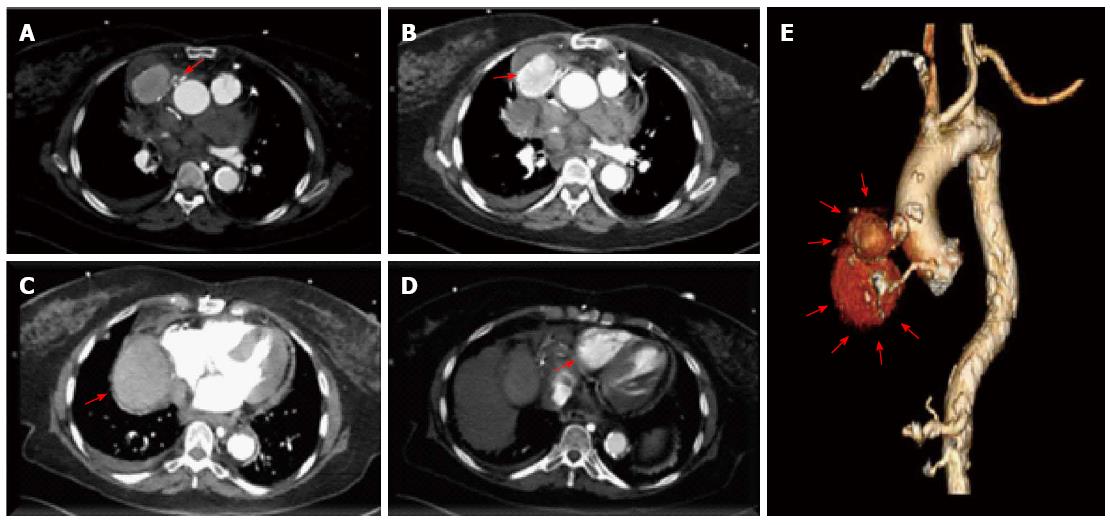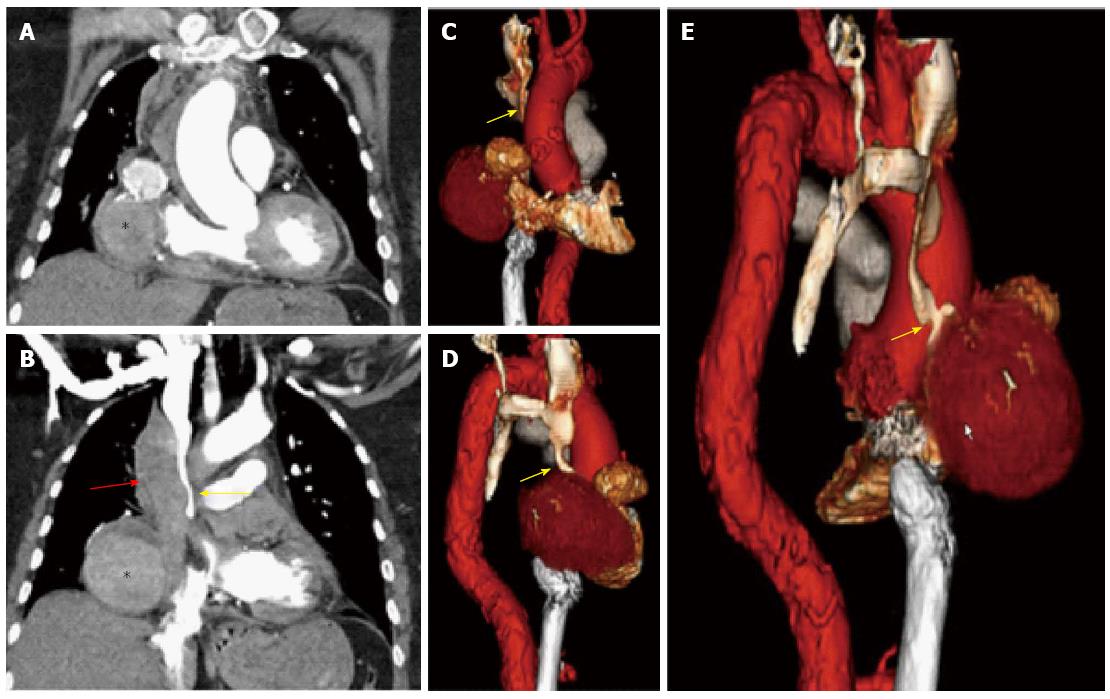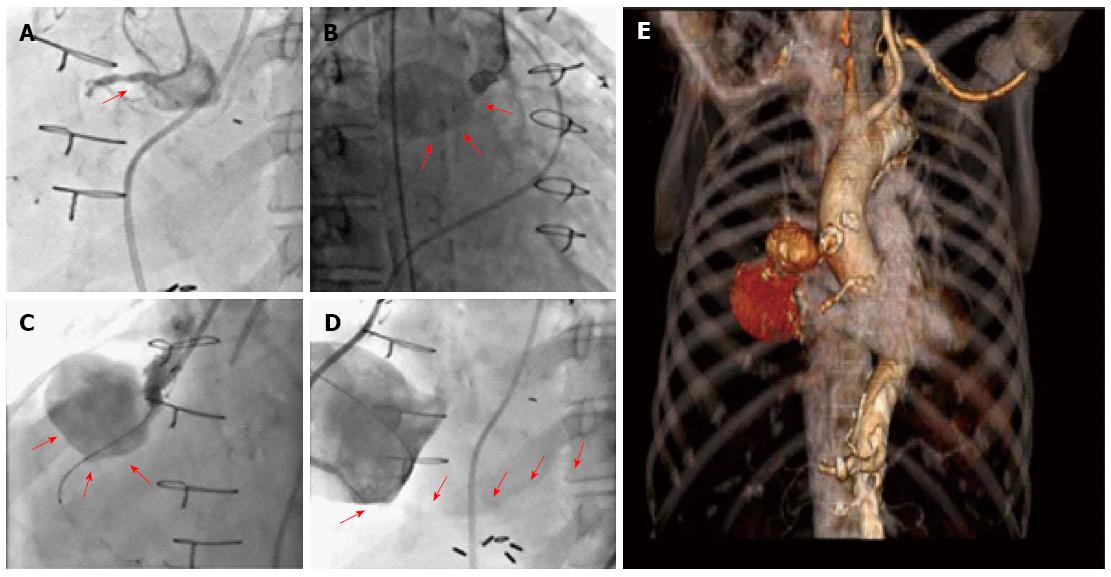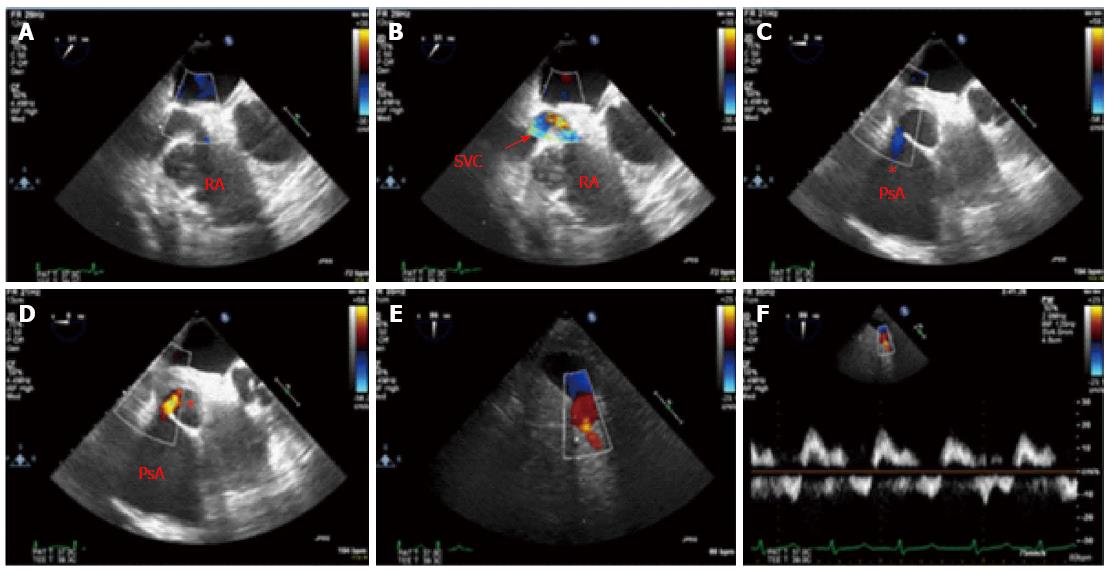Copyright
©The Author(s) 2015.
World J Cardiol. Jun 26, 2015; 7(6): 351-356
Published online Jun 26, 2015. doi: 10.4330/wjc.v7.i6.351
Published online Jun 26, 2015. doi: 10.4330/wjc.v7.i6.351
Figure 1 Transaxial tomographic views showing the right coronary artery origin and the saphenous vein grafts pseudoaneurysm lobes.
A: The more cranial lobe of the pseudoaneurysm measured 4.7 cm × 5.4 cm in diameter and demonstrated mural thrombosis; B: The caudal lobe of the pseudoaneurysm also demonstrated mural thrombosis and measured 8 cm × 7 cm in its larger diameter; C, D: The caudal lobe of the giant pseudoaneurysm was patent and demonstrated flow into the distal right coronary and right posterior descending artery; E: Computed tomographic 3-D reconstruction of the saphenous vein grafts giant bilobed pseudoaneurysm to the right posterior descending artery.
Figure 2 Significantly distended neck veins secondary to compression of the superior vena cava by the giant saphenous vein grafts pseudoaneurysm to right posterior descending artery.
A: Coronal tomographic views showing upper and lower lobes of the SVG pseudoaneurysm (asterisks); B: Large hematoma (red arrow) is shown compressing the SVC (yellow arrow); C, D, E: Computed tomographic 3-D reconstruction of the SVG giant bilobed pseudoaneurysm and SVC compression (yellow arrow) in anterior, lateral and posterior views. SVG: Saphenous vein grafts; SVC: Superior vena cava.
Figure 3 Coronary angiography demonstrated a giant pseudoaneurysm of the saphenous vein grafts with patent flow to the right posterior descending art.
A: Coronary angiography showing the ostial and proximal right coronary artery (RCA) occlusion; B: Angiographic image depicting the upper lobe of the SVG to RPDA giant pseudoaneurysm; C: Giant pseudoaneurysm of vein graft with wide neck beginning about 2 cm from the graft origin; D: Injection within the aneurysm sac revealing a patent bypass graft that continues into the distal right coronary artery with a sequential connection to the posterior descending artery; E: Computed tomographic 3-D reconstruction of the SVG giant bilobed pseudoaneurysm to the distal right coronary artery seen in relation to the thoracic structures. SVG: Saphenous vein grafts; RPDA: Right posterior descending artery.
Figure 4 Intraoperative echocardiography showed superior vena cava compression by the giant pseudoaneurysm cranial lobe.
A: Intraoperative transesophageal echocardiogram demonstrated normal left ventricular systolic function with left ventricular ejection fraction 60% and the giant pseudoaneurysm of SVG to RPDA in relation to the cardiac structures; B: Echocardiographic view of the pseudoaneurysm upper lobe compressing the superior vena cava (SVC); C, D: Blood flow by color Doppler of the SVC into the right atrium; E, F: Bidirectional flow is seen between the upper and lower pseudoaneurysm (PsA) lobes during diastole and systole respectively. Color Doppler and flow velocities of the giant pseudoaneurysm caudal lobe. RPDA: Right posterior descending artery.
- Citation: Vargas-Estrada A, Edwards D, Bashir M, Rossen J, Zahr F. Giant saphenous vein graft pseudoaneurysm to right posterior descending artery presenting with superior vena cava syndrome. World J Cardiol 2015; 7(6): 351-356
- URL: https://www.wjgnet.com/1949-8462/full/v7/i6/351.htm
- DOI: https://dx.doi.org/10.4330/wjc.v7.i6.351












